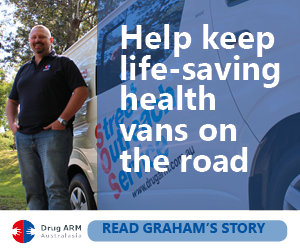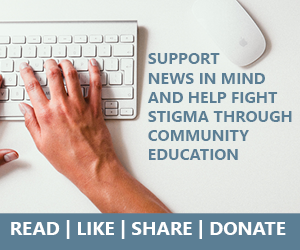In today’s fast paced world, with 24-hour access to social media and the internet, intolerance of others on the rise and an inability to find stillness in our lives, healthcare professionals say it’s little wonder why teen suicide rates are on the rise.
The first step in prevention is identifying the warning signs.
Some estimates are as high as 80 percent of those thinking about suicide want others to be aware of their emotional pain and stop them from dying.
 A warning sign does not automatically mean a person is going to attempt suicide, but mental health professionals say any sign should be taken seriously.
A warning sign does not automatically mean a person is going to attempt suicide, but mental health professionals say any sign should be taken seriously.The warning signs that mental healthcare professionals pay close attention to include a prior suicide attempt, talking about suicide and making a plan, giving away prized possessions, preoccupation with death, signs of depression, a lack of energy or motivation, hopelessness and anxiety, as well as drug and alcohol use.
Although there are accepted warning signs of depression, it still can be tough to diagnose, said Nikki Kontz, clinical director for Phoenix-based Teen Lifeline.
“It would be great if we had a blueprint or an all or nothing list, but that’s usually not the case,” Kontz said. “The one thing I can say is that it’s really important to pay attention to any dramatic behavioral changes.”
While Arizona currently ranks 18th in the nation in teen suicide, more than three decades ago it was a different story.
“When Teen Lifeline first started Arizona ranked second in the nation,” Kontz said. “When you look at the numbers over the years we are definitely not where we were – we’re doing much better – but we still have a long way to go.”
For many parents, suicide is a “scary” topic and often not talked about, which Kontz notes makes it much harder to prevent.
“The reality is people who are suffering with these thoughts are suffering in silence,” she said. “The more we don’t talk about it the more our children are scared to come forward.”
Although there are many programs in Arizona aimed at preventing teen suicide, because the state is largely rural and segmented, access to mental health is often difficult.
“It’s hard to make sure the smaller communities have access to the programs and we’re not so good at communicating that within our own state,” Kontz said. “There is also the problem of suicide prevention not being a priority for the Legislature or the governor. It used to be a much bigger priority, but for the last five years there definitely has been a lot less focus.”
The Centers for Disease Control recommends that local mental health agencies, crisis centers, clergy, health departments, medical organizations, injury prevention agencies, schools and other community members work together to develop goals and strategies to prevent teen suicide.
“The one thing to remember is, if you are worried about your child try to get input and support from everyone you can,” Kontz said. “The more people you have on your side to support your child, the more you can feel comfortable that no matter where they are at there is someone there to help.”
Still it is frustrating, Kontz added, that the system lets too many children fall through the cracks.
“It’s not uncommon for us to see a waiting list as long as a month for a child who is having thoughts of suicide or other mental issues to get into see a professional,” she said.
“You see families being turned away from hospitals because there is not enough open beds. The families are trying to bide their time to keep their children safe, and that’s devastating. What we know with our crisis hotline is that if we are able to catch a child early enough when problems are not so overwhelming we can prevent suicide from becoming an option. But, a big part of it is the awareness of friends, family and the community.”
“We consistently report that that our teens have the highest rate of feeling sad or hopeless compared to all other states,” she said. “This is alarming.”
Although it’s hard to point to any one driving factor why Arizona’s children feel sad or hopeless, Kontz said, a piece of the puzzle can boil down to maturity.
“Adults forget what it’s like to be a teenager,” Kontz added. “In general it’s tough. Our brains work differently and our outlook on the world is also as different. For teenagers they are stuck between being a child and being an adult. In their minds they think they are all grown up, yet they still have all of the emotions and problem solving skills that are very childlike.”
One myth persists that if parents ask their child directly about suicide that they plant the idea in the brain of their teenager. This is something mental health professionals said is simply not true.
“Parents need to just ask their child,” Kontz said. “They need to talk to them and tell them they are worried, that they’ve noticed changes, and simply ask if they are having thoughts of suicide. It’s important for parents not to be afraid to use these words.”
Although teen suicide is a growing epidemic there is hope.
“The most important thing I want every teenager to know is to not give up,” Kontz said. “But, when you feel there is nobody there to support you don’t stop reaching out. Eventually someone will listen.”
This piece by David Louis first appeared on ‘Today’s News-Herald’ on October 27, 2016.























